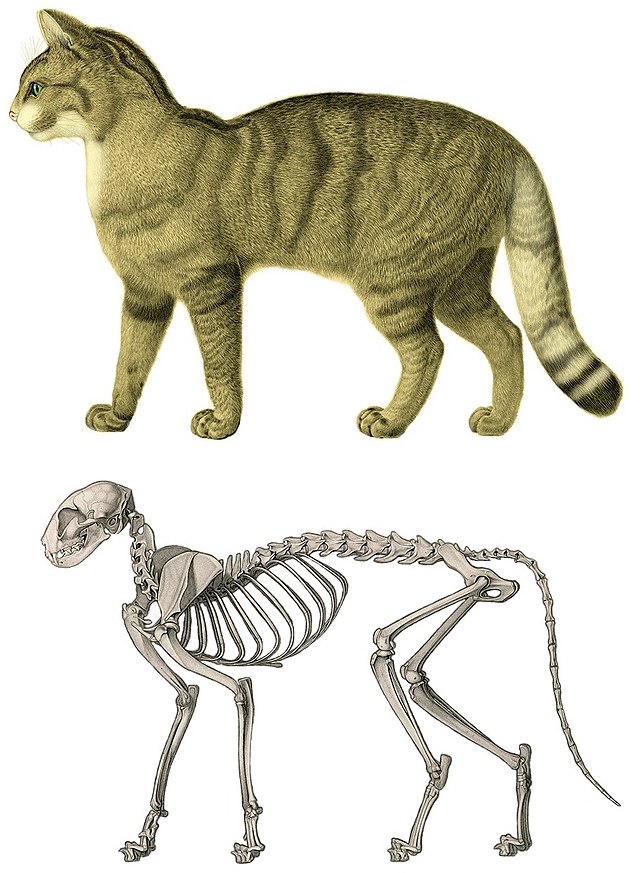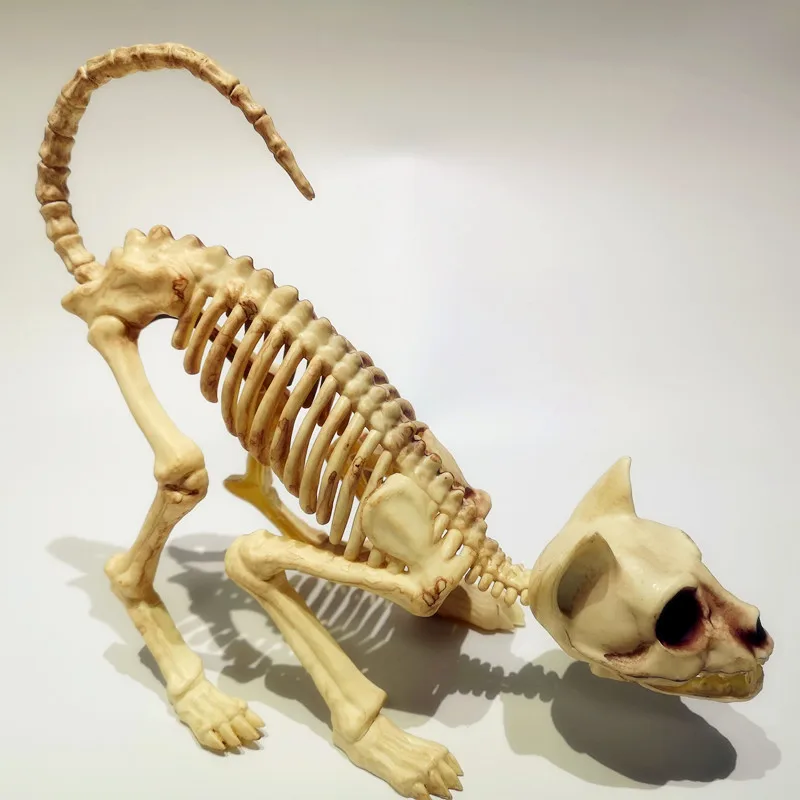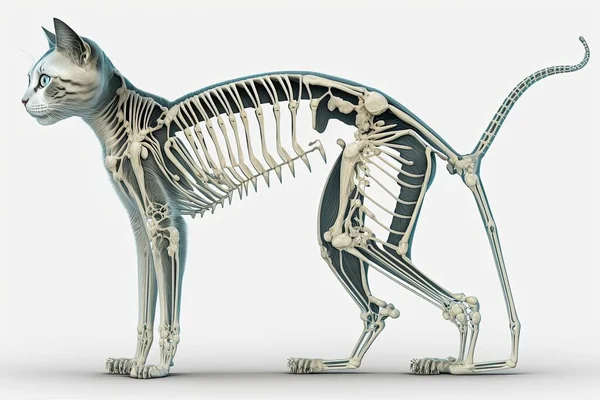Cats are fascinating and mysterious creatures, widely known for their independence, agility, and unique personalities. Whether you're considering adopting a cat or simply curious about feline behavior, understanding the key characteristics of a cat can help you appreciate their complexity. In this article, we’ll explore the various physical, behavioral, and psychological traits that define cats, as well as what makes them such beloved companions to humans.
When we think about cats, one of the first things that come to mind is their appearance. Cats come in a wide range of shapes, sizes, and coat colors, but certain physical characteristics of a cat are common to all felines.
One of the most remarkable physical characteristics of cats is their flexibility. Cats have incredibly flexible spines, which allow them to twist and contort their bodies with ease. This gives them an exceptional ability to leap, climb, and land on their feet, often referred to as the “righting reflex.” According to Turner (2017) in The Domestic Cat: The Biology of Its Behavior, this flexibility is crucial for a cat’s ability to hunt and navigate through their environment.

Spine: The cat’s spine is composed of 53 vertebrae, allowing for a high degree of flexibility.
Claws: Cats have retractable claws, which they can extend when climbing or hunting. These claws are also essential for their ability to defend themselves.
Whiskers: Cats’ whiskers, known as vibrissae, are highly sensitive and help them navigate in the dark and judge spaces to fit through.
Cats are known for their excellent vision, especially in low light. Their eyes are adapted for hunting at dusk and dawn (crepuscular hunting). Carter (2018) in Cat Anatomy and Physiology states that cats have larger corneas and lenses compared to humans, which allows them to see better in dim lighting.
Vision: Cats can see six times better in low light than humans, thanks to a higher number of rod cells in their retinas.
Hearing: Cats have exceptional hearing, able to hear ultrasonic sounds that are inaudible to humans. This allows them to detect small rodents and other prey animals.
Smell: A cat’s sense of smell is 14 times more powerful than a human’s, playing a crucial role in communication and hunting.
Cats are well-known for their distinctive behaviors, which can vary greatly from one individual to another. Understanding the behavioral characteristics of cats can help you connect with and care for your feline companion.
Cats are often described as independent animals, and it’s true that they tend to be more solitary compared to other pets like dogs. Bradshaw (2016) in Cat Sense: How the New Feline Science Can Make You a Better Friend to Your Pet notes that unlike dogs, cats evolved from solitary hunters and retain a significant degree of independence. While some cats enjoy companionship, they generally do not require constant attention and often appreciate their alone time.
Solitude: Cats typically have a “territorial” mindset and may prefer to keep to their own space.
Self-Grooming: Cats are meticulous groomers and spend a significant amount of time cleaning themselves. This grooming behavior is both a form of self-care and a way to manage stress.
Despite their independent nature, cats are also highly playful and curious creatures. Turner (2017) explains that the playful behavior of kittens and adult cats is often a way to practice hunting skills. This is why cats enjoy interactive toys like feathers, lasers, and balls that mimic prey.
Play: Cats often engage in playful behaviors like pouncing, chasing, and stalking—this is their way of honing their predatory instincts.
Curiosity: Cats are naturally curious and will explore their surroundings carefully. This trait often leads them to get into places they shouldn’t!
Cats communicate in several ways, both verbally and non-verbally. Their communication characteristics are important to understand, especially for pet owners. Carter (2018) notes that while cats are less vocal than dogs, they still have a wide range of sounds and body language to convey their emotions.
Vocalizations: Cats use meowing to communicate with humans, while purring often signifies contentment or comfort. Hissing or growling may indicate fear or aggression.
Body Language: The position of a cat’s ears, tail, and whiskers provides insight into their mood. For example, a cat with a flicking tail or flattened ears may be feeling threatened or agitated.

Understanding the psychological characteristics of cats is essential for building a trusting relationship with your pet. While cats may appear aloof at times, they are capable of deep emotional connections.
Although cats are known for their independent nature, they can form strong bonds with their owners. Bradshaw (2016) suggests that cats often express affection by purring, rubbing against their owners, or following them around the house. While they may not exhibit affection in the same way dogs do, cats are capable of forming deep emotional attachments to their human companions.
Purring: Cats often purr when they are content, but they may also purr when they are anxious or in pain, as it has a calming effect on themselves.
Kneading: Cats sometimes knead with their paws on soft surfaces, a behavior that stems from kittenhood when they kneaded their mother’s belly to stimulate milk flow.
Cats are territorial animals, and they often feel more secure when they have a routine. According to Turner (2017), cats will often establish a “territory” in your home and may mark it with scent glands located on their face, paws, and tail. They are creatures of habit and can become stressed if their environment or routine is disrupted.
Territorial Marking: Cats may rub their face against furniture, walls, or even their owners to mark their territory. This is a natural and instinctual behavior.
Routine: Cats thrive on routine, and sudden changes in their environment or schedule can lead to stress or behavioral issues.
Cats are truly unique pets with a combination of fascinating physical, behavioral, and psychological characteristics that set them apart from other animals. Their independence, agility, acute senses, and complex communication methods make them an intriguing companion for those who appreciate their subtleties. Understanding the characteristics of cats helps owners provide the best care and build a strong bond with their feline friends.
Whether you're a seasoned cat owner or a first-time adopter, knowing what makes cats tick can make your experience with them much more rewarding.

References:
Turner, D. C. (2017). The Domestic Cat: The Biology of Its Behavior. Cambridge University Press.
Bradshaw, J. W. S. (2016). Cat Sense: How the New Feline Science Can Make You a Better Friend to Your Pet. Basic Books.
Carter, L. (2018). Cat Anatomy and Physiology. Veterinary Science Press.
animal tags: Felidae
We created this article in conjunction with AI technology, then made sure it was fact-checked and edited by a Animals Top editor.